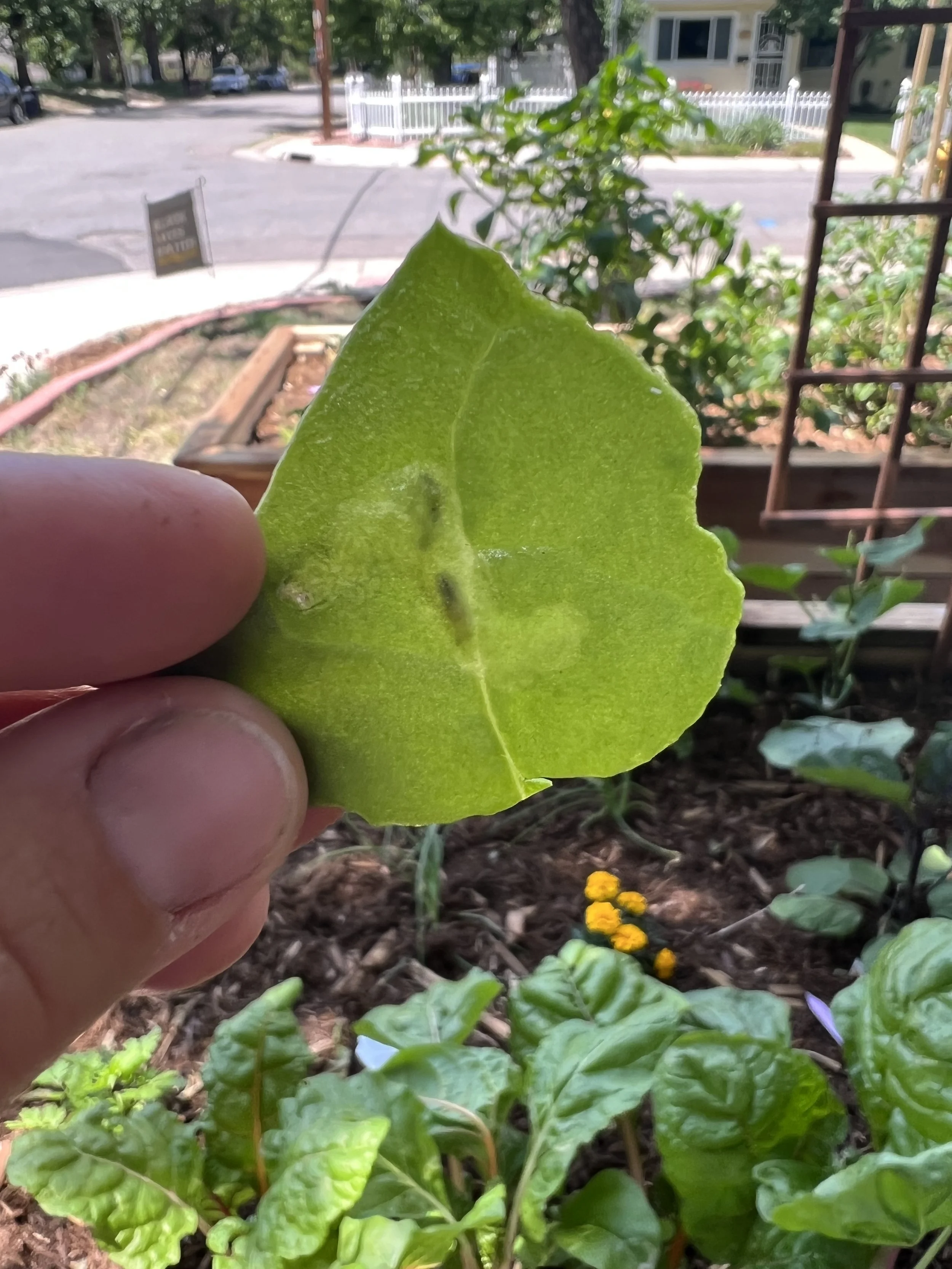Loopers and Aphids and Miners… OH MY!
Spring is upon us and if you haven’t already started, you will soon be getting ready to plant out your spring gardens.
But did you know that with the warm weather also comes the pests?
Here are some of the common springtime pests, how to identify them, and how to manage them without chemicals.
Cabbage Loopers
The first time you see those little white butterflies you think, "oh what a pretty butterfly!" When you realize they are the parents of the tiny green worms that are eating your cole crops you just want to see them burn on the surface of the sun. Those white butterflies are actually cabbage moths or cabbage white butterflies who lay their small yellowish eggs on the underside of leaves. They particularly like kale, cabbage, and broccoli leaves and will eat small to large holes leaving an edible yet ugly appearance.
The caterpillar is easy to spot - bright green and hiding next to the ribs of leaves, and can easily be picked off the plants. For best results, check plants every few days and dispose of the little bastards in soapy water. Cabbage loopers do have some natural enemies as well including parasitic wasps, flies, and birds. You can also exclude cabbage loopers entirely by using row covers in early to late spring or until your plants get too big to cover.
If you find cabbage loopers each season, try planting thyme, sage, or rosemary nearby. Try to rotate your crops seasonally if able.
Aphids
Aphids can be found on crops in the garden starting in spring and spanning the whole growing season. They range in color from green to gray, orange or red and suck the plant's juices leaving thickened, wrinkled leaves. (I really can’t blame them. I love the plant juices too.) Aphids typically enjoy cole crops like kale, cabbage, or broccoli, but they will also feast on almost anything in the garden. What’s great about their love of kale is that if you don’t like eating kale, planting it in the garden can be beneficial to keep aphids off other desirable plants.
The good thing about aphids is that they are a relatively simple pest to get rid of naturally and organically. When you first see aphids in the garden, simply spray them with a forceful stream of water from the hose. Once they fall to the soil, it is difficult for them to find their way back up to your plants. Additionally, they have a ton of amazing predators. Ladybugs and lacewings can often be found in local garden centers for sale, but they will also find the aphid party in your garden on their own. Other predators include spiders, earwigs, and small birds.
Continue checking and spraying plants with water until the number of aphids reduces.
Leaf Miners
Ever notice those little squiggly lines in the leaves of some of your plants? Specifically spinach, beets, and swiss chard? Those tunnels are caused by the larvae of leaf miners who are feeding within the leaves. It doesn't affect the growth of the plant, but it's unattractive aesthetically and can reduce the amount of edible plant material - because no one wants to eat those little grubs.
Luckily leaf miners are easy to control without pesticides. It's easy to see where they are feeding since they leave the mine. Remove leaves (or sections of leaves) that you see with damage. Don't put these in a home compost since the pupae can survive. Check the underside of leaves frequently to look for the small rice shaped eggs. Simply smush the eggs to reduce the amount of larvae that will survive.
If you are constantly finding leaf miner damage year after year, you can try planting yarrow, dill, or fennel nearby to encourage parasitic wasps (which will kill the leaf miners) to your garden.
There are obviously more pests that may be present in your garden. Over the next few weeks we’ll be posting about them. Make sure you’re signed up for our mailing list to get updates on when we publish new posts.
Are you already seeing pests in your garden? Schedule your free 20 minute discovery call to get help!
PS. While we realize that there are chemical ways to get rid of pests, that’s not something we like to teach here. You’ll find great exclusion techniques, simple manual removal techniques, and companion planting suggestions. For information on pesticide use you can check out the Colorado State University Extension office website or your local extension website.















